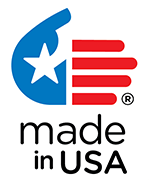Welcome
Get accurate results from DNA evidence
TrueAllele® technology interprets DNA data from crime scene evidence
Laboratories, investigators and lawyers want accurate unbiased results. But some methods limit DNA interpretation, giving inaccurate answers. TrueAllele provides a solution. TrueAllele technology is automated and objective. Its robust software interprets “inconclusive” DNA. The computer uses all the DNA data. And it quickly and reliably solves DNA mixtures.
TrueAllele separates DNA mixture data into genotypes. Afterwards, the computer determines how strongly evidence matches a person, or even other evidence. The statistical results help with investigative leads and in legal proceedings. Validation studies show that TrueAllele results are reliable. Courts accept the computer findings in the United States and abroad. Cybergenetics offers forensic DNA education and other resources.
Cybergenetics
TrueAllele® Technology
Other Probabilistic
Genotyping Technologies
Uses all the DNA data
TrueAllele uses all the data to get more identification information.
Not thorough
TrueAllele uses all the data to get more identification information.
The DNA answer is right
TrueAllele considers all possibilities to find the correct answer.
Not accurate
TrueAllele considers all possibilities to find the correct answer.
Gives an unbiased result
TrueAllele infers parameters from the data, without people involved.
Not objective
TrueAllele infers parameters from the data, without people involved.
Handles many mixture contributors
TrueAllele has no hard limit on the number of contributors. It is validated for 10 unknowns.
Not powerful
TrueAllele has no hard limit on the number of contributors. It is validated for 10 unknowns.
Easy to explain
TrueAllele-separated genotypes are easy to explain in court.
Not understandable
Extracts all the DNA information
TrueAllele does more work to get more information from DNA evidence.
Not informative
TrueAllele does more work to get more information from DNA evidence.
Computer-driven process
The human operator role in TrueAllele can be minimal.
Not automated
The human operator role in TrueAllele can be minimal.
Easily solves more cases
Centralized computing lets TrueAllele capacity easily expand for higher throughput.
Not scalable
Centralized computing lets TrueAllele capacity easily expand for higher throughput.
Cybergenetics
TrueAllele® Technology
Uses all the DNA data
TrueAllele uses all the data to get more identification information.
The DNA answer is right
TrueAllele considers all possibilities to find the correct answer.
Gives an unbiased result
TrueAllele infers parameters from the data, without people involved.
Handles many mixture contributors
TrueAllele has no hard limit on the number of contributors. It is validated for 10 unknowns.
Easy to explain
TrueAllele-separated genotypes are easy to explain in court.
Extracts all the DNA information
TrueAllele does more work to get more information from DNA evidence.
Computer-driven process
The human operator role in TrueAllele can be minimal.
Easily solves more cases
Centralized computing lets TrueAllele capacity easily expand for higher throughput.
Other Probabilistic
Genotyping Technologies
Not thorough
TrueAllele uses all the data to get more identification information.
Not accurate
TrueAllele considers all possibilities to find the correct answer.
Not objective
TrueAllele infers parameters from the data, without people involved.
Not powerful
TrueAllele has no hard limit on the number of contributors. It is validated for 10 unknowns.
Not understandable
Not informative
TrueAllele does more work to get more information from DNA evidence.
Not automated
The human operator role in TrueAllele can be minimal.
Not scalable
Centralized computing lets TrueAllele capacity easily expand for higher throughput.
